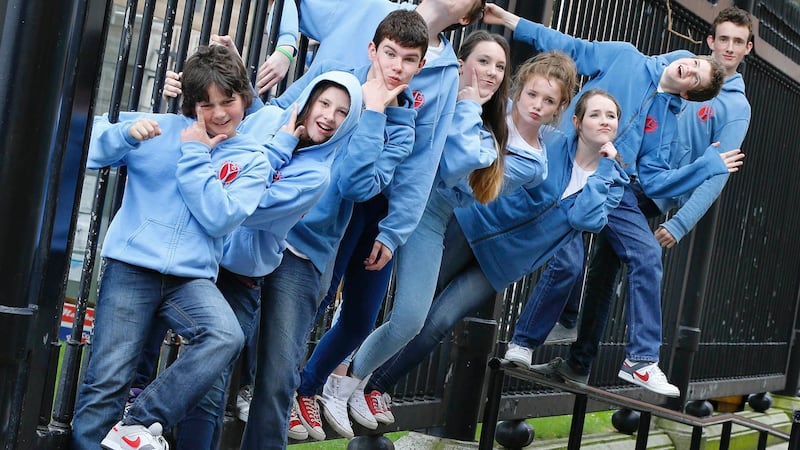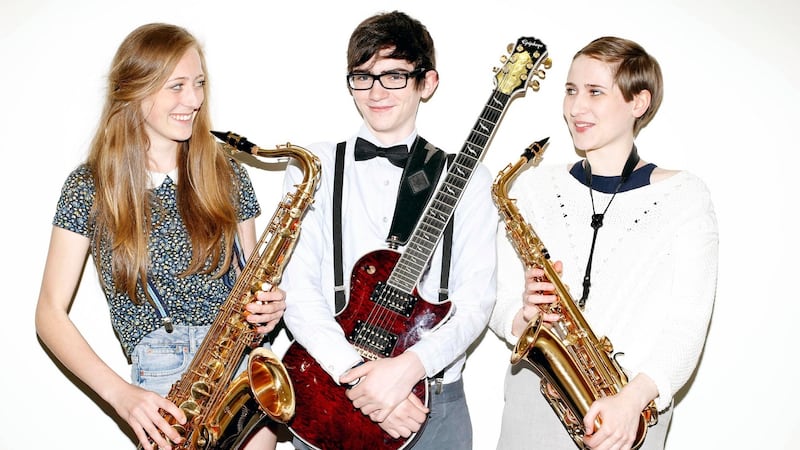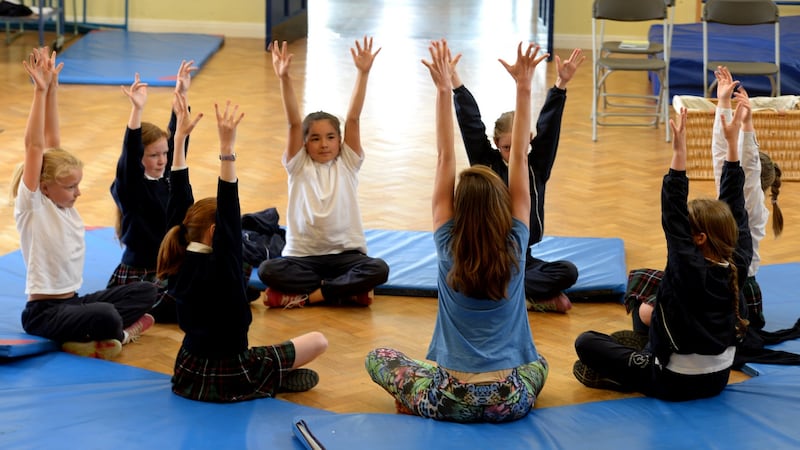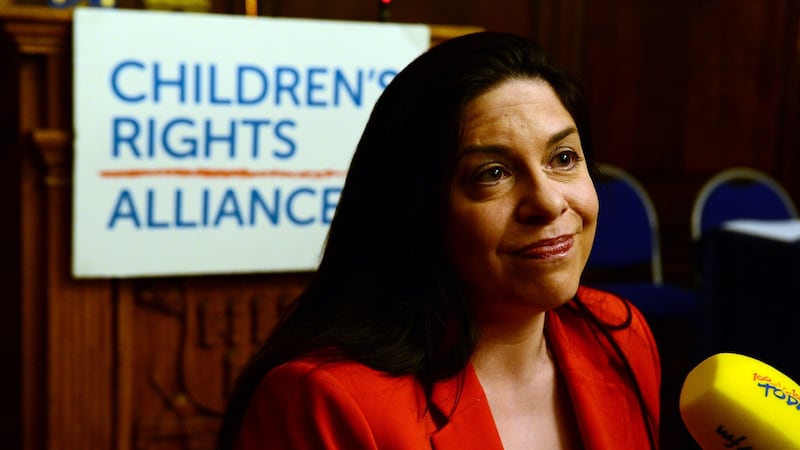Will it be ballet or basketball? Chess or computers? Scouts or soccer? Music or martial arts? Or could my child possibly do all of the above?
As primary-school pupils settle into their new classrooms, the question of what they should do after school, where and how often, preoccupies many a family.
The development of structured after-school childcare, encompassing activities to enrich young minds and bodies, is in its infancy here. After-school services are unregulated and unmonitored; there are no inspections, no quality standards, no required qualifications for staff and no agreed activity programmes.

An action plan for children aged four to 12 was published by the Departments of Education and of Children and Youth Affairs earlier this year. The Government-appointed working group that produced it had consulted with children in the process.
What emerged from that consultation, says Tanya Ward, chief executive of the Children's Alliance, was that, generally, younger children want after-school services to be more like home, a place where they can get warm meals, play with their toys and change out of their uniforms.

“Whereas eight to 12-year-olds are saying they want to do more activities like art classes, karate, football. They like to spend time playing in the afternoon, get a snack, do a bit of homework.”
In the absence of affordable, seamless services at the end of the school day, parents have to make their own arrangements. Motivations for signing up children for extra-curricular activities range from a need to delay their home-coming due to parental work commitments, to a desire to push them to excel at something, to wanting them to find a hobby that they’ll love.

Whatever the reason, a child’s extensive list of extra-curricular activities seems to be a badge of honour among middle-class parents. And families who can’t find fund them fret that their children are losing out.
More than two-thirds of parents say they can’t afford extra-curricular activities, according to the annual Irish League of Credit Unions’ survey on back-to-school costs published in July. Parents reported spending an average of €187 per child on these activities – €195 in primary school and €177 in secondary school.
“Because effectively parents are subsidising the education system, it means they have less money to invest in these after-school activities,” says Ward.
In a similar survey conducted by Barnardos, more than one-quarter of parents said they spent up to €100 on extra-curricular activities run by their child’s primary school. June Tinsley, head of advocacy with Barnardos, is particularly concerned about “extra-curricular” activities such as swimming, which occur during the school day but still incur extra costs for parents. Aquatics is a strand of the primary PE curriculum but often schools can’t absorb the cost of access to a pool.

Regardless of social class, Tinsley says, if a child is struggling with the very academic focus of the school curriculum, participating in extra-curricular activities can be really beneficial and gives them an opportunity to shine.
“When that is denied to them because of cost, then they are going to feel very disengaged with the school system.”
Parental concern about children missing out would seem justified by research that has mined the longitudinal study Growing Up in Ireland (GUI). An ERSI study on behalf of the Arts Council last year found that children who participate in artistic and cultural activities cope better with schoolwork and have more positive attitudes towards school later on than those who are less engaged.

In tracking progress of 8,500 nine-year-olds, those who frequently read and attended classes in music, dance or drama, were identified as having improved confidence to cope with schoolwork by the age of 13. They were also happier, had reduced anxiety, better academic skills and fewer socio-emotional difficulties.
Another piece of research on GUI data, published in 2012, concluded that children from disadvantaged backgrounds may lose out academically if they do not have access to the same kind of activities as their middle-class peers. However, the study, carried out by Trinity College Dublin and the ESRI, also warned that being involved in too many activities cancels out some of the education benefits.
What should parents look for in after-school activities.
So what should parents consider when enrolling children in activities outside school this September?
Junior infants
Parents of junior infants should probably stop here. Four- and five-year-olds have more than enough to cope with in adjusting to the primary-school day, and need downtime and unstructured play afterwards.
Senior infants
If you are itching to give your junior or senior infant an early start in, say formalised music, sport or drama tuition outside school, proceed with caution.
First class up
Generally, first-class upwards is time enough, agrees educational psychologist Deirdre Griffin (deirdregriffin.ie) who, as a mother of three children, has both professional and personal views on the subject.
With a physical activity such as swimming, the earlier you get them used to the water the better, she acknowledges, but that need not be through very structured sessions.
“I took my kids out of swimming lessons because they were getting so upset. I just committed to taking them for a fun swim once a week – if they want to go back to it, then grand, but I want them floating.”
What activity should you choose?
In picking a hobby, perhaps the most important first step is to think about what drives your child, what makes them light up, advises Dr Moira Kennedy, an educational psychologist and director of the Children’s Clinic (thechildrensclinic.ie) in Dublin. “By encouraging them to become involved in an activity they are inherently interested in, they are of course, more likely to be motivated to go every week and, most importantly, to enjoy it.”
How much should they do?
As to the question of quantity, “there is probably a fine line between striking a beautiful balance of music/arts/sports activities and ‘over scheduling’ our children to the point of exhaustion”, she says. “As a psychologist, my advice would be to step back and examine your child’s weekly schedule and look at the quality of life of the whole family.”
Make sure their activities are not preventing them getting enough sleep, interfering with family meal times or depriving you all of unstructured time to reconnect and enjoy being together.
“Every family is different and the concept of being ‘too busy’ means different things to different people,” she says. “So long as quality of life is maintained for all, it doesn’t really matter if your child has one or many hobbies.”
Definitely not one every day and even two extra-curricular activities is a lot, says Griffin, who also acknowledges that for some parents they are a childcare option. If they are directly after school, in the school building, that takes less effort and motivation to attend than going home and then having to get out again.
However, “what a child can do in their free time at home is really important – child-guided activities,” she stresses. It is also worth considering does the child need to join a group to do something, or could you do it as a family?
Out of school
The popularity of Scouting, which is open to both boys and girls from the age of six, and needs parents as volunteer helpers, is growing in Ireland. The number of participants has risen from 35,000 in 2007 to 50,000 today, reports Kieran Cody, communications commissioner of Scouting Ireland, scouts.ie. Scouting, and also Girl Guides, irishgirlguides.ie, which was featured in Health + Family last week, enables children age five upwards to learn new skills and develop resilience through fun, outdoor adventure, as well as to make friendships and memories.
A longitudinal study of child development in the UK found that joining the Scouts or Guides appears to help lower the risk of mental illness in later life. Scientists from Edinburgh and Glasgow universities reported that about a quarter of the almost 10,000 participants in the National Child Development Study had been in the Scouts or Guides, and this group was around 15 per cent less likely to suffer from anxiety or mood disorders at age 50.
Low-cost activity
Ward, of the Children's Alliance, believes more parents could be availing of low-cost opportunities these organisations, and what others such as Foroige, can offer children.
.They are subsidised a bit by the State and it is important the State continues to do it,” she remarks, otherwise they would be out of reach for many families.
Music Generation – musicgeneration.ie – has a vision of giving all children access to high-quality music performance education. Co-funded by U2, it is currently working through 12 local music partnerships and is expanding into nine more areas.
One free option to look out for, or even seek for your child’s school, is the Be Active After-School Activity Programme – beactiveasap.ie – for first- and second-class pupils. Run by trained teachers with the help of parents in 830 primary schools around the country, it mirrors the PE curriculum (minus aquatics) and is funded by the HSE.
Having evolved from a pilot project in four schools in 2008, ASAP is the result of collaboration between education, health and sport professionals, explains its national co-ordinator Paul Friel, and is currently being independently evaluated.
Over the coming weeks, some private providers – the Gaiety School of Acting to mention just one – will offer free taster sessions. Otherwise, it’s prudent to at least ask to sit in as observers on a potential activity, but it still might turn out, down the line, that this is not one for your child.
Reasons to give it a miss
“If a child is pressurised to continue with an activity they don’t enjoy, it can be counterproductive,” says Kennedy. However, don’t regard finishing an activity as a failure, but rather “it creates an opportunity to try something new, exciting and different”.
Griffin believes that extra-curricular activities “should not be the cause of distress or pain”. Parents need to ask themselves is it essential and is it of benefit? And also reflect honestly on whether they are vicariously getting their kids to do activities on their own behalf?
Some argue that children should never be allowed to quit lightly, otherwise they won’t learn to persevere with things they don’t like.
While that makes some sense to Griffin, she also believes it is important to teach children to walk away from things that don’t feel good, “yet we are dragging them to things”.
“For me there is a parent-child trust thing – I can’t bring my child to an activity and look across the hall at them with tears in their eyes or unpeel them from my leg when we arrive. I am not paying for that.”
And she wouldn’t be the first parent left with a child’s leotard in mint condition for sale – worn only once.
swayman@irishtimes.com
Mindful antidotes in tech-filled world
Yoga, mindfulness and meditation can be just the antidote children need to the go-go, technology-saturated lives in which they are immersed.
“It sounds ironic to talk about stress at such a young age but unfortunately when parents are stressed, children are going to feel that indirectly but are not able to name it,” says Laura Sarah Dowdall, a well-being coach and contemporary dancer who runs Healing Yoga in Dublin. “We end up taking on this tension that our parents have.”
She provides workshops both as an in-school and after-school activity, to introduce children to mindful movement and creative expression, teaching body and emotional awareness to give them a better sense of themselves.
“So that they feel a little more grounded – like little trees rather than clouds. I think children are very vulnerable in following the path of what their parents want, just blowing along – and suddenly you get to secondary school and have to pick your subjects.”
Dowdall aims to empower children with techniques that they can use in decision-making and in recognising and coping with different emotions.
There has been “incredible growth” in the interest in children’s yoga, says Nicola Foxe, who started Yo-Yo Yoga in north Dublin with one class a week in 2013. Now there are so many children’s yoga teachers around the country, she says, “it is like the penny has dropped. Anybody who works with children has realised the benefits it can have, from mindfulness, mental health perspective to a physical perspective”.
She learnt yoga as an adult and found it so helpful, she wished she had started earlier. Children can be taught something as simple as breathing techniques to help make things in their lives easier, she explains.
When being shown a particularly challenging pose, they can feel how breathing can help. They learn that “if breath can make this pose easier, it can help off the mat too. If you’re scared, it make things more manageable – and that translates to all ages.”
Foxe is also passionate about doing yoga with children with special needs and teaches family yoga, both in groups and in private sessions at people’s houses.
For more information, see healingyoga.ie and yo-yoyoga.ie
Finding the perfect fit
A guide to help young people and their parents choose an after-school arts youth project that is right from them has just been published for the first time by the National Youth Council of Ireland (NYCI).
Questions to Ask about Joining a Youth Arts Project: Helping You Find the Perfect Fit! is the work of the council's senior project officer in youth arts, Anne O'Gorman. Voluntary participation in non-formal activities after school is such a valuable counter-point to formal education and so significant in terms of leisure time and creating friendships, that "making the right choices is important", she says.
Even if a young person decides to join a music project, one music project isn’t the same as another, she points out. One may be very focused on competitions and another may just want young people to make friends, using singing as a way to connect them. “Both of those are valid but you will be much happier if you are in the right one.”
Asked if these low-cost options are inclined to be overlooked, O’Gorman agrees that there can be a presumption that something costing a lot of money is better quality. But the professionalisation of youth work has transformed it from the more haphazard gatherings parents might have experienced in their teenage years.
“There are so many guidelines and regulations around non-profit youth projects and they are so well organised and put together with such care and consideration, it is worth people asking those questions and finding this out,” she says.
The NYCI is also committed to trying to level disparity in access to the arts. “It should not be the case,” O’Gorman adds, “that if your parents can afford to pay for them, you will have drama and art and music in your life and if you parents don’t, then you won’t.”
See youth.ie












